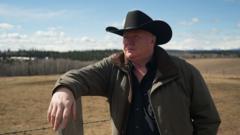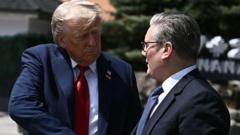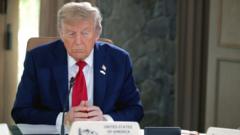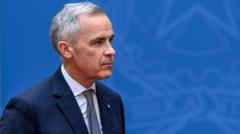In Alberta, discontent with the federal government has reignited discussions around independence, as many residents express a desire for greater autonomy or affiliation with the US. Amid mixed opinions on the future of the province, political leaders must navigate a complex landscape that embodies regional dissatisfaction while considering the implications of separation.
Alberta's Independence Movement: A Growing Call for Autonomy

Alberta's Independence Movement: A Growing Call for Autonomy
In the wake of rising dissatisfaction with the federal government, the Alberta independence movement is gaining traction, with many supporters advocating for separation from Canada or even alignment with the United States.
The threat to Canada's political stability has taken center stage, particularly in Alberta, where the local independence movement is gaining new energy. Many western Canadians, frustrated by years of Liberal governance, are increasingly vocal about the prospect of Alberta breaking away from the rest of the country.
At a recent event in Lethbridge, a gathering of around 100 residents engaged in discussions led by Dennis Modry, a retired heart surgeon and co-founder of the Alberta Prosperity Project, which advocates for an independence referendum. When asked if Alberta should have a larger role within Canada, only a handful raised their hands; however, a significant portion supported the idea of Alberta becoming an independent nation or joining the United States.
The backdrop to this shift includes controversial comments from former U.S. President Donald Trump, who suggested making Canada the 51st state, and the increased support for the Liberal Party in federal polls, further entrenching the western alienation sentiment. Modry insists that the movement is focused on Alberta's sovereignty rather than an outright union with the U.S., although fellow project leader Jeffrey Rath expresses openness to the latter idea, noting cultural similarities with neighboring states.
Political analysts highlight that this discussion, previously relegated to the fringes, is now mainstream amid a growing sense of regional neglect. Preston Manning, a prominent figure in Alberta's conservative circles, recently argued that public discontent could incentivize voters to consider secessionist views seriously.
Many Albertans feel that their needs and concerns are overlooked by Canada's eastern political landscape, especially regarding environmental regulations that they believe hinder their economic growth. This dissatisfaction endures as polling indicates that while only a minority of Albertans support outright separation, many recognize the need for regional voices to be amplified in national discussions.
Political leaders like Alberta Premier Danielle Smith are responding to this sentiment, pushing for more autonomy in trade agreements with the U.S. and demanding that any new prime minister address Alberta's concerns swiftly or risk further fracture in national unity. While she dismisses immediate calls for separation as impractical, critics accuse her of stirring divisiveness.
Opinions within the separatist movement are varied; some seek improved relations within Canada rather than full independence, while others, like Rath, see the alignment with the U.S. as a viable path forward.
Despite the growing discussion around independence, the idea remains contentious. Many Albertans, while acknowledging their grievances, prioritize unity and collaboration. A significant portion of voters indicate that they still support liberal representation in Ottawa, especially with candidates like Mark Carney positioned as moderates able to bridge divides.
As Alberta navigates this complex political landscape, the incoming federal government—regardless of who wins—faces the challenge of addressing the mounting dissatisfaction in the West and finding pathways to a more integrated national vision.






















